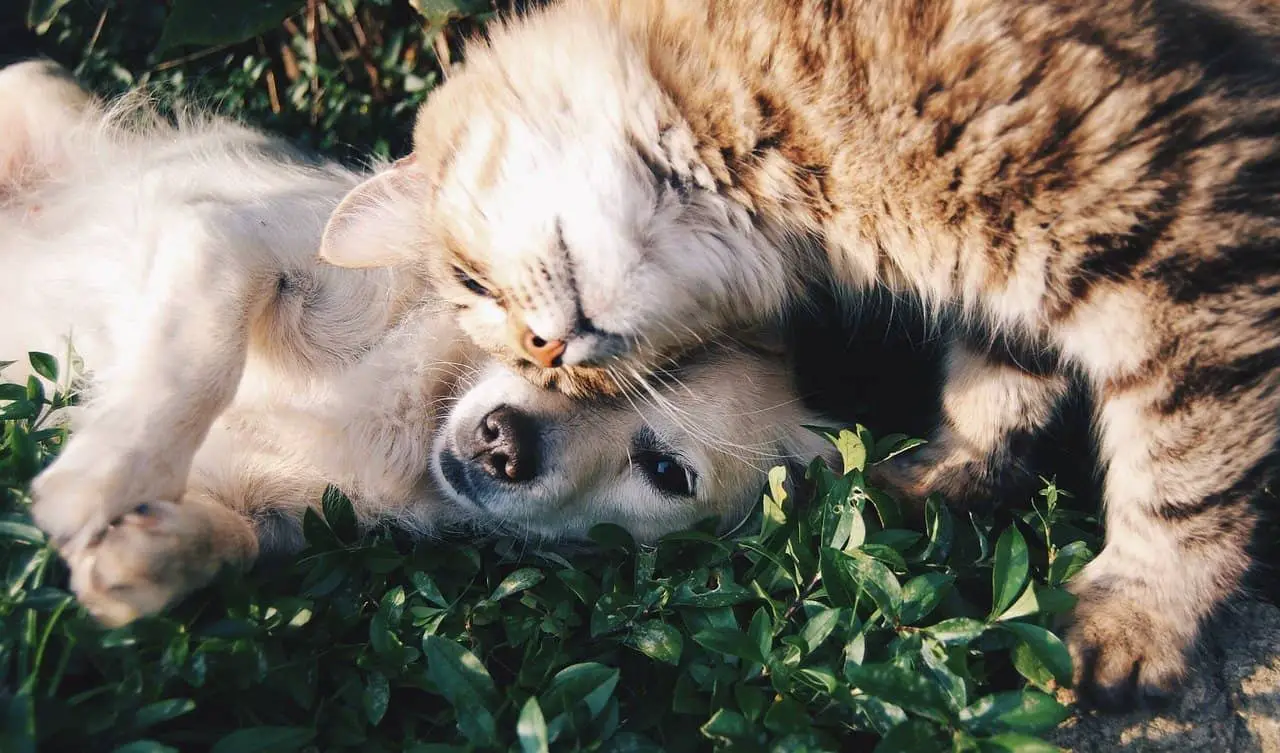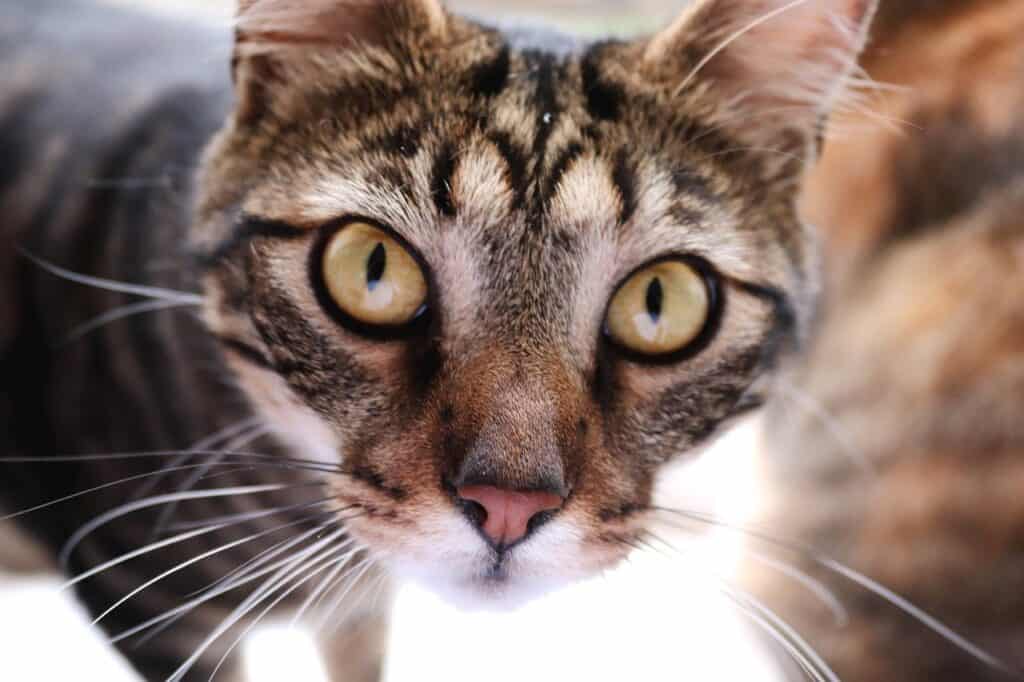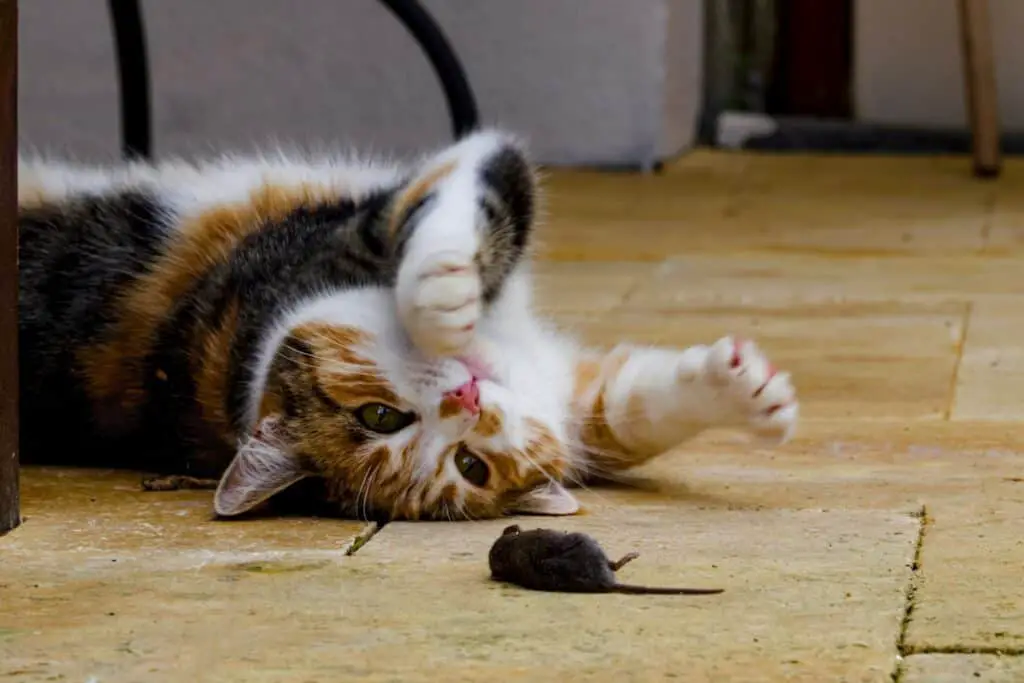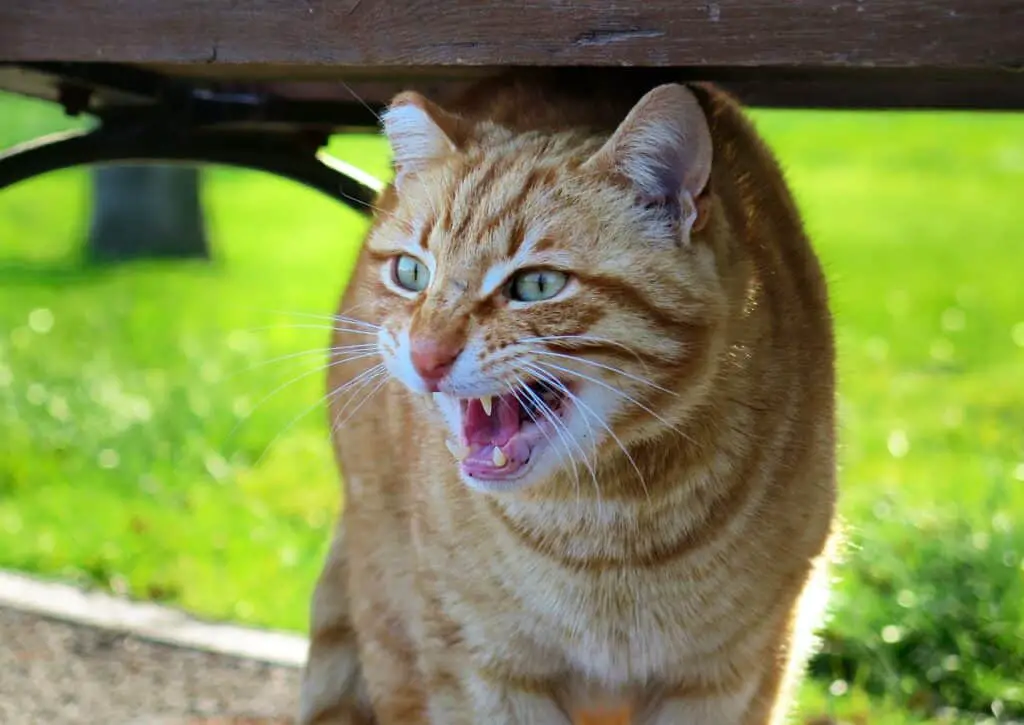Some people love dogs; other people love cats. Both of them make great household companions. Cats are often characterized as aloof and independent, while dog people love their canine’s outgoing and playful behavior instead of a cat’s quiet affection.
However, cats – like humans – don’t always live up to their stereotypes, and you shouldn’t be surprised if you see a cat behaving more like a dog. As it turns out, cats behaving like dogs is more common than you might think.
The question is, why do some cats behave like dogs?
There are specific cat breeds that naturally exhibit more dog-like behavior, such as Maine Coon, Bombay Cats, and the Abyssinian. Other cats mimic a dog’s behavior because they learned that this gets them favors from their owners, for example, treats, playtime or compliments, and petting.
Although some cat breeds are born with dog-like personalities, it seems strange that independent creatures such as cats would mimic dog behavior to please their human owners.
On the other hand, looking at how cats became domesticated animals over many centuries, it does make sense that cats willfully alter their behavior.
How cat behavior has evolved over time
Cats have a very long history with humans. Even though the first cats were domesticated centuries ago, at around 7500 BC (about 9500 years ago), they have never entirely lost their wild instincts as dogs have for the most part.
The generally accepted reason for this is that, instead of dogs, which humans domesticated for their usefulness, cats domesticated themselves for their own benefit.
It became clear to cats that living with humans had its benefits. There was plenty of food, a safe, warm place to sleep, and the human habitat was generally free of a cat’s natural predators. On top of that, humans generally seemed to like them, probably because the cats also took care of any rodent or pest problem that humans had. In return, their new owners gave them love and petting every once in a while.
Cats decided that living with humans had a lot of benefits for them, so, over time, they evolved and turned into pets.
This shows that cats are good at adapting their behavior to their surroundings for their benefit. Why are cats so good at adapting their behavior?
Cats learned to adapt based on their environment. They can change their behavior to benefit them, often in exchange for rewards. This resulted in cats essentially domesticating themselves. Because this helped their survival, evolution favored the cats who were good at this and passed this skill on to future generations.
Intelligent cats fool you by mimicking a dog
The ability to observe and copy others shows that cats are pretty intelligent creatures. Even though you might not think this by looking at your furball, we often don’t give cats the credit that they obviously deserve.
It takes an intelligent cat to observe other cats, other animals, and humans and then work out how they can imitate their behavior to their benefit.
The only reason why cats would go through the trouble of doing this is that it is rewarding for them. By imitating behavior that their owners have shown to like – behavior a devoted dog would display – they are likely to be rewarded by the owners. This may come in the form of treats, a belly rub, or playtime.
Essentially, cats are masters at fooling you to get their way but how do cats know what behavior to imitate?
To mimic a dog, a cat needs to have an example and observe how you respond to a dog’s behavior. Therefore, cats acting as dogs is something that usually occurs in homes with both cats and dogs as pets, or in situations when cats regularly interact with dogs.
What does it mean if your cat behaves like a dog?
When a cat mimics dog-like behavior, it does this because it wants a reward in some form. This may be a treat or just a show of affection from its owner. The cat knows that some dog behavior is perceived as positive (or ‘cute’) by their owners. It’s using that knowledge to entice a positive reaction from their owner.
Some cats are so good at copying dogs that they even mimic a dog’s often silly behavior. They must have noticed that humans find this adorable in dogs, and the cat wants to get some of that affection.
It’s pretty funny in and of itself that cats go through these lengths to get their owner’s appreciation. In a way, they really blow their cover as being ‘cool’ and ‘independent’.
What type of behavior do cats copy from dogs?
The most observed dog-behavior that cats mimic are the following things;
- Following commands
- Play fetch
- Following their owner around the house
- Panting
- Walking on a leash
- Growling
- Acting silly
- Listening to you
- Wagging their tail like a dog when you’re near
- Learning tricks
- Being chatty
Cats and dogs have much in common
You could say that cats don’t really have to try hard to copy a dog’s behavior. Maybe not because they’re so much smarter than dogs (cats would disagree) but more because cats and dogs have a lot in common anyway.
Sometimes, your cat may not be copying dog-like behavior consciously, and it might just be natural behavior. For example;
Both cats and dogs have similar needs. They both need a safe home, love from their owner, a warm and safe place to sleep, regular meals, and much more. They know that these things will be given to them by their owners. Because of this, cats and dogs form strong bonds with their humans. They know they are dependent on their owners for survival.
Cats and dogs both communicate through body language, especially among themselves. Although their responses to situations are different, dogs do understand a cat’s non-verbal signals and vice versa. You could say they have an unspoken understanding of each other.
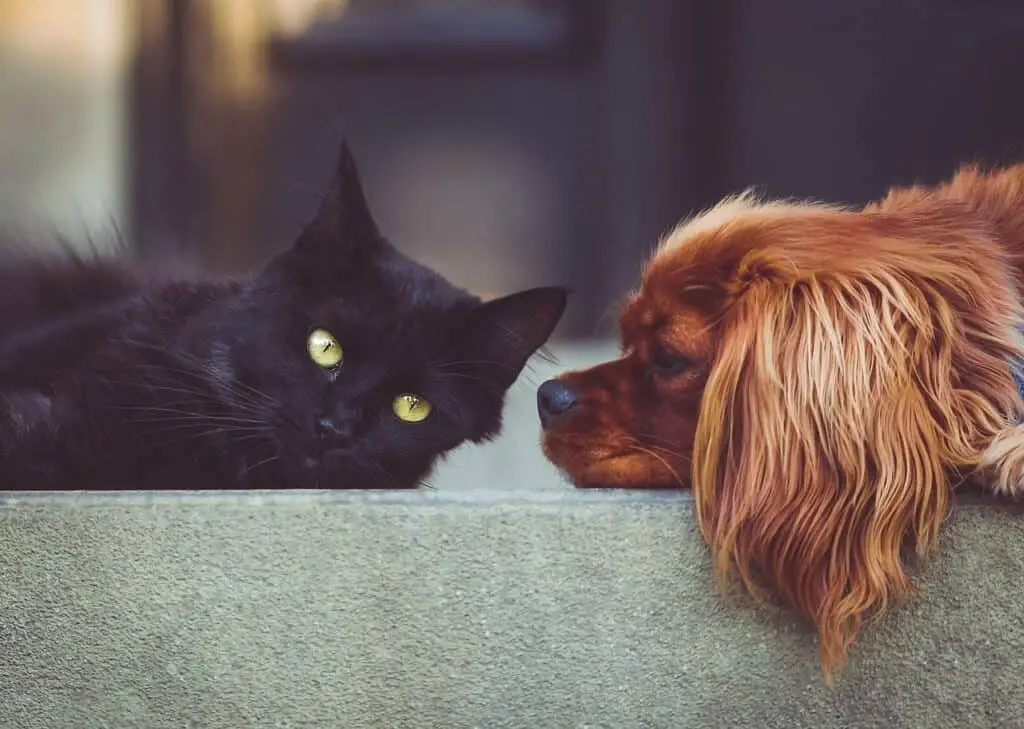
Both have powerful senses, a developed sense of smell, epic hearing, and good eyesight. They’re both fast learners as well, although each in their own way, but both cats and dogs know what their owners like and the difference between good and bad behavior.
Differences between cats and dogs
Cats and dogs who lived together since they were kitten and puppy will often naturally copy each other’s behavior. For example, dogs who spent a lot of time around a cat might spend much more time grooming themselves, while cats may enjoy more rough play when they grew up with a dog.
Nevertheless, there are some very distinct differences between cats and dogs.
Although cats tolerate other cats or pets, they also enjoy their ‘alone time’. Dogs, on the other hand, enjoy living in packs much more and thrive in family settings. For cats, this is depending on their personality.
Cats are fantastic jumpers and climbers, and they enjoy heights, while dogs prefer to stay close to the ground—one of the most apparent differences in housetraining. Show a cat their litter box, and they instantly understand what it is for. It takes months for dogs to learn that peeing and pooping is done outside.
Cat breeds that behave like dogs
Although all cats can learn how to mimic a dog’s behavior, some cats are better at it than others. Several cat breeds naturally exhibit dog-like behavior without even trying. This can express itself in several ways; some are better at learning tricks while other cats love to swim.
Most notable are:
- Abyssinian; likes water and playing fetch. Accepts walking on a leash and often follows their owner around.
- Ragdoll; gets very well along with other cats and dogs in the household. They’re very playful.
- Sphinx; the Sphinx likes to bathe, and they’re very lively and devoted like dogs.
- Turkish Angora; likes to enthusiastically greet visitors to their homes. They like to be the center of attention and are great swimmers.
- Bombay; this breed can be leash trained and likes to play fetch.
- Ocicat; can learn several voice commands, likes walking on a leash and playing games. They are also extremely devoted to their owner, just like dogs.
- Chartreux; this breed is also very attached to their owner, and they learn commands rather well.
- Burmese; these cats are very loving and attached to their owners. They like playing and keeping themselves busy all the time. They hate being alone.
- Manx; can be trained to understand commands and attaches very strongly to their owners and their homes. They love playing fetch and often bury their toys just like dogs do.
- Maine Coon: Maine coon’s are very devoted to their owners and can be playful.
Can you teach a cat to behave like a dog?
Definitely! Although some cats are more susceptible to training, most cats can learn tricks. It usually takes longer for cats to learn tricks than dogs, but with some patience, most cats can learn to do anything.
As long as, from your cat’s perspective, there is a clear benefit to learning something, they usually go along with it. Your cat will probably enjoy the attention from you and the interaction.
According to Karen Pryor, founder of Karen Pryor Academy of Animal Training and Behavior; Most indoor cats live a relatively dull life, and teaching them tricks can provide valuable mental and physical stimulation. It will enrich their lives and help them to be healthier and happier.

